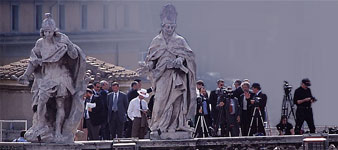This paper presents the most significant results of an in-depth study of the websites of some of the largest Catholic dioceses worldwide (Bogotá, Johannesburg, Los Angeles, Madrid, Manila, Melbourne, Mexico, Milan, and Sao Paulo). The research tries to understand how the activities of institutional communications of these dioceses are carried out through their websites. Moreover, through a comparison of the contents and services offered by the websites, the study offers an overview of the main elements present in these kinds of websites and some of the omissions that may hinder the communication goals of their promoters.
The Research Methodology was a combination of studying the websites for a two-year period (2004-2005), as well as interviewing the Webmasters of these sites, and a group of more than forty journalists, each one an expert in religious communication. Journalists were considered a distinguished public for these kinds of websites.
It is hoped that this study will be helpful to practitioners and directors of diocesan offices of communication, as well as other Catholic institutions, who may know be familiar with different website projects and thus be able to learn from the mistakes of others.



